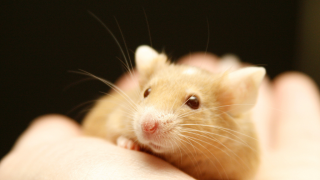Monkeys drugged, anaesthetised and tested in pointless experiment
Researchers in the USA are using marmosets in pointless experiments to study how ‘female Viagra’ affects the brain and increases sexual desire in women.1
The US Food and Drug Administration sparked controversy back in August 2015 when it approved the first drug to boost female libido.
The drug, which is commercially sold as Addyi, has been linked with serious side effects such as low blood pressure and loss of consciousness and apparently only works in 10% of patients. Nevertheless, it has been shown to improve sexual desire in post-menopausal women and those with hypoactive sexual desire disorder (HSDD) or major depressive disorder.
Addyi has already been tested in animals and humans and has been deemed safe and effective enough to be placed on the market. Yet researchers at the University of Wisconsin-Madison have taken it upon themselves to conduct further tests in marmosets in an attempt to learn more about how the treatment works.
Female marmosets were dosed with the drug every day for 7-12 weeks during which their interactions with male marmosets was observed in a series of behavioural tests.
The female marmosets were then injected with tracing chemicals before being anaesthetised for brain scanning tests. There is no mention of what happened to the animals at the end of the experiment.
According to the researchers, Addyi enhanced sexual behaviour in female marmosets by altering their brain chemistry and made them more responsive to intimate grooming from the males.
Using monkeys in experiments where humans can and have already been used is totally unacceptable.
Furthermore, the marmosets used in this experiment were not actually suffering from any problems with sexual desire, which limits the value of these findings.
Human sexuality is extremely complex and can be affected by a wide range of physiological, social, hormonal and psychological factors, which cannot be replicated in animal experiments.
The best way to learn more about human disorders is to study humans.
Sources:
- When brain metabolism dips, desire goes up in monkeys on ‘female Viagra’. (2015). Medical Xpress, 10 Dec: http://medicalxpress.com/news/2015-12-brain-metabolism-dips-desire-monkeys.html
- Flibanserin-stimulated partner grooming reflects brain metabolism changes in female marmosets. (2015). Journal of Sexual Medicine, 12: 2256-2266. Original article can be found here: http://onlinelibrary.wiley.com/doi/10.1111/jsm.13068/abstract












